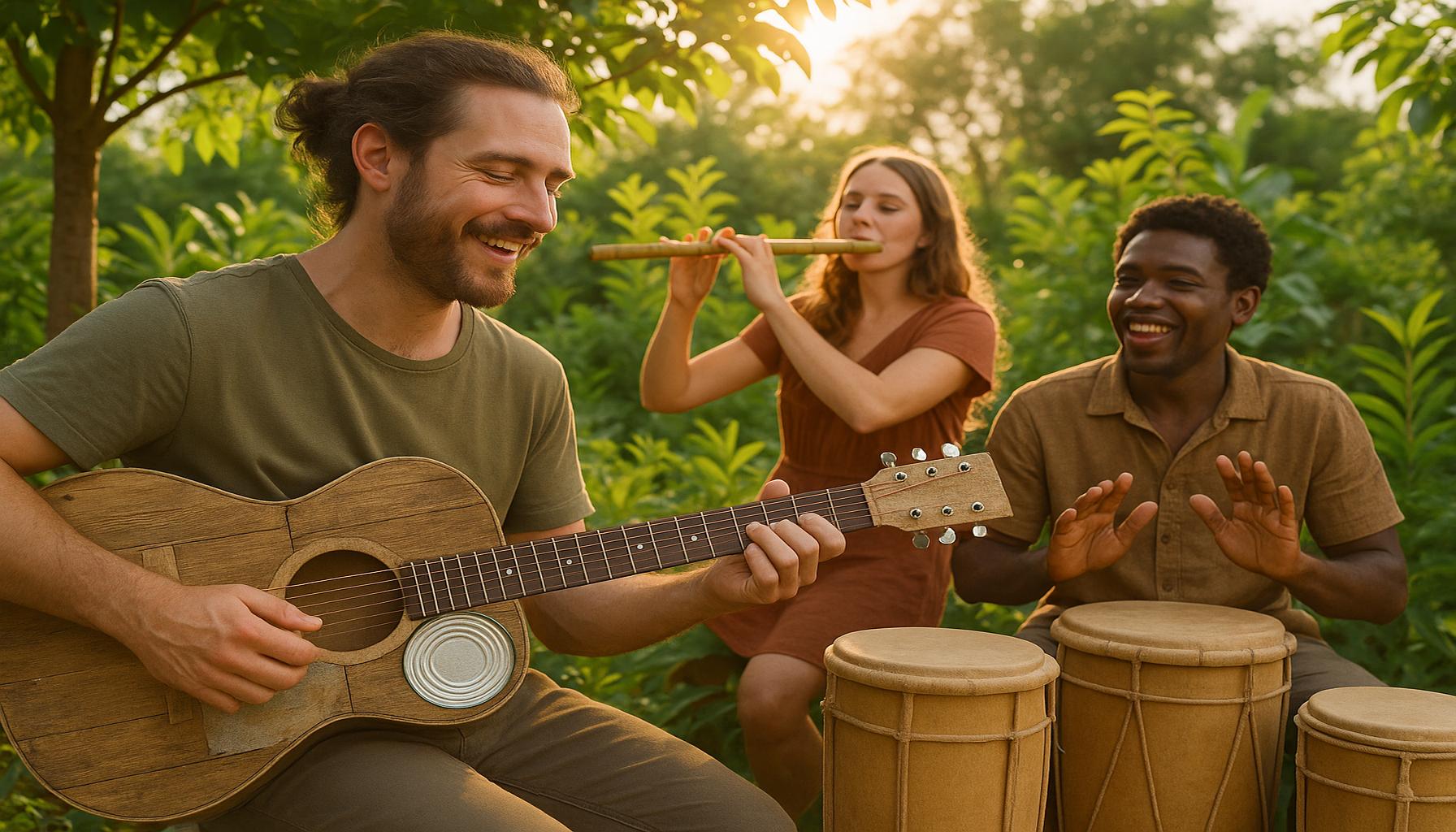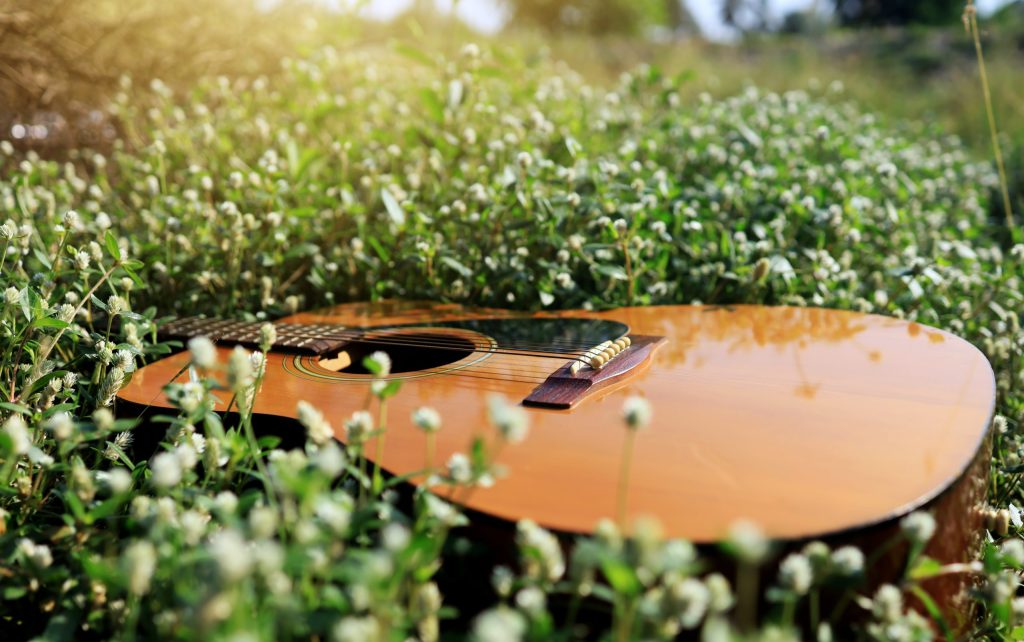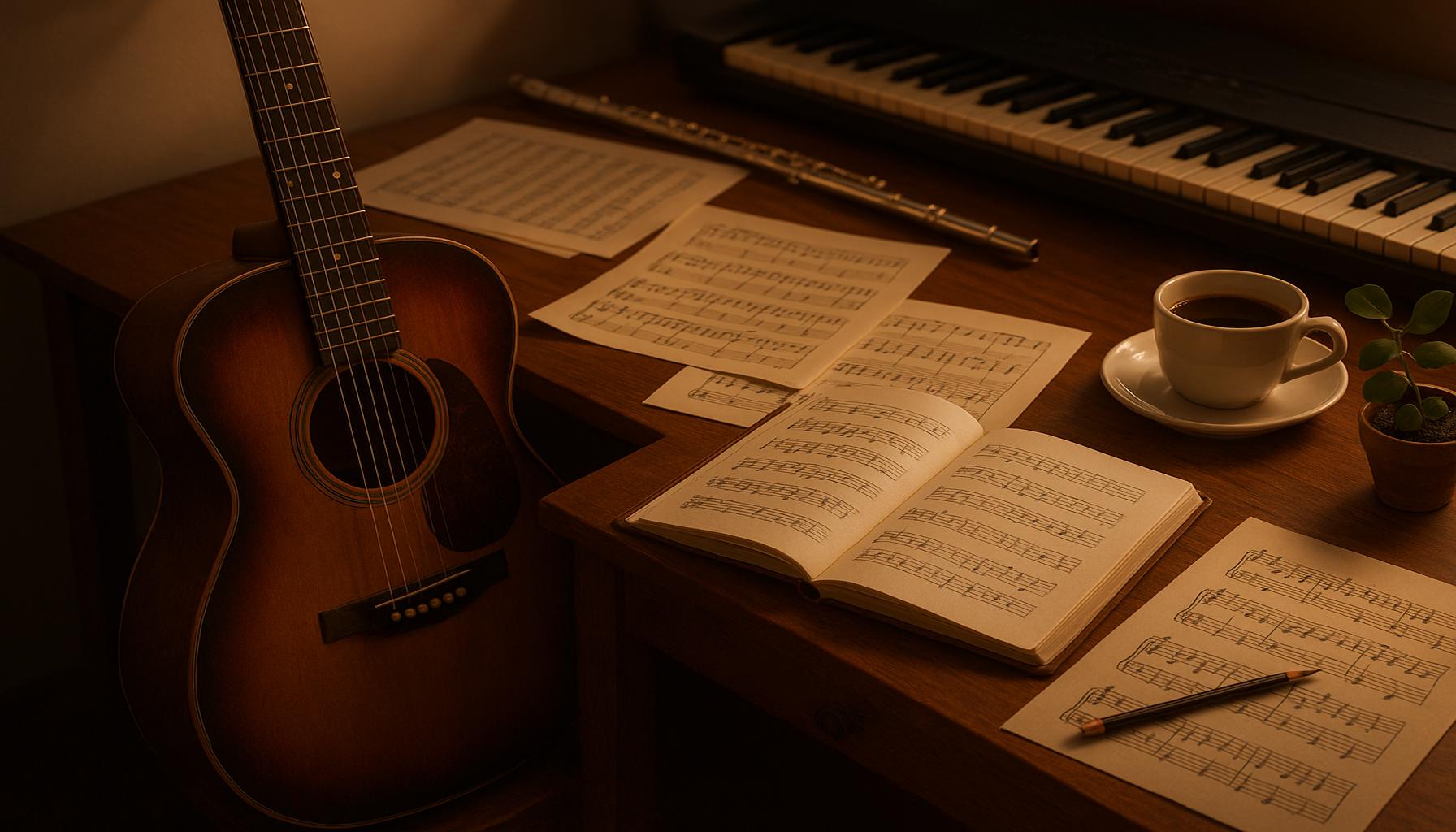Music and Sustainability: How to Create Ecological Instruments and Promote Environmental Awareness

Innovative Approaches in Music for Ecological Awareness
In our contemporary society, the intersection of artistry and environmental stewardship has blossomed into a vital movement within the music industry. As issues like climate change and biodiversity loss gain unprecedented attention, musicians are innovatively addressing these challenges, aiming to create a symbiotic relationship between their craft and the ecological landscape. This trend is not just about minimizing the environmental footprint; it extends to fostering a deeper connection with the planet through sound.
- Ecological instruments made from sustainable materials.
- Awareness campaigns utilizing music to inspire change.
- Collaborations between musicians and environmental organizations.
One of the more notable aspects of this movement is the production of ecological instruments. Instrument makers are increasingly turning to sustainable resources like reclaimed wood, bamboo, and recycled metals. For instance, the renowned guitar maker, Taylor Guitars, has developed a line of instruments made from sustainable wood that not only sounds good but also reduces deforestation. Similarly, brass instruments produced from recycled materials help combat waste while producing melodious tones that captivate audiences.
Beyond the creative aspect of instrumental artistry, musicians increasingly harness their platforms to engage in awareness campaigns. Events like “Earth Day” festivals or global initiatives such as Live Earth leverage music’s vast reach to not only entertain but also inform. Artists, including Billie Eilish and Coldplay, have publicly expressed their commitment to environmental causes, often dedicating portions of their performances to raise funds for charities focused on climate action. Their music becomes a vessel, transforming melodies into rallying cries for change.
The collaboration between artists and environmental organizations further amplifies these efforts. Partnerships with groups like the Sierra Club or Greenpeace help in not just educating the public but also mobilizing grassroots movements. Through concerts and festivals, musicians generate awareness surrounding issues such as pollution and wildlife conservation, sending messages that resonate long after the final note fades.
As we delve deeper into this evolving relationship between music and sustainability, it is evident that the rhythm of ecological change is gaining momentum across various platforms. Artists are not just creators of sound; they are becoming crucial advocates for the environment, inspiring listeners to engage in meaningful action. In this vibrant tapestry of creativity and ecological awareness, the concert stage becomes a powerful arena for change. Join us in exploring how this intersection continues to evolve, reshaping our understanding of what it means to harmonize artistic expression with the health of our planet.

DISCOVER MORE: Click here to unlock the therapeutic power of writing
Crafting Sound: The Art of Ecological Instruments
The journey toward a more sustainable music industry begins with the instruments themselves. Traditional instrument manufacturing methods often rely on hardwoods from endangered forests and the use of non-renewable resources. However, musicians and craftsmen are now pivoting towards the creation of ecological instruments that embrace sustainable practices. This shift not only reduces environmental impact but also enhances the potential for global environmental awareness through music.
Instrument makers are increasingly turning to materials that respect the planet while still delivering quality sound. Techniques such as using reclaimed wood—harvested from sources that would otherwise be discarded—are gaining popularity. For example, brands like Earthwood Guitars craft unique instruments from salvaged trees, offering a second life to materials that have often been overlooked. This inventive recycling doesn’t just contribute aesthetically; it resonates with audiences by telling a story of sustainability.
Another growing trend is the use of bamboo. Known for its rapid growth, bamboo is a highly renewable resource that produces instruments ranging from flutes to guitars. The tonal qualities of bamboo have garnered attention for their rich, vibrant sound, making it an appealing choice for both musicians and environmental advocates. Notably, the Bamboo Project has emerged as a pioneer in designing instruments that cater to environmental consciousness while retaining the artistry inherent in music-making.
The integration of recycled metals in brass instruments further exemplifies the move towards sustainable craftsmanship. Companies like Getzen have led the way in producing trumpets and trombones from recycled materials, effectively marrying ecology with performance art. This not only minimizes waste but also promotes the idea that exceptional musicality can thrive on sustainability.
- Sustainable woods such as ebony and mahogany used in small quantities.
- Alternative materials like plastic bottles converted into percussion instruments.
- Collaborative projects that engage local communities in instrument making.
These sustainable approaches in instrument crafting illustrate more than just innovation—they signify a cultural shift where musicians are seen as stewards of the planet’s health. Concerts and album releases often include narratives about the materials and processes involved in the instrument creation, fostering a profound connection with audiences. This education through art paves the way for fans to become more aware of their consumption choices and their impact on the environment.
As this dynamic continues to evolve, it becomes clear that music and sustainability are not mutually exclusive but rather intertwined pathways toward a common goal: a healthier planet. Each note played on an ecological instrument reverberates with a message of hope, inspiring artists and listeners alike to join the movement for change.
Ecological Instrument Creation Techniques
The fusion of music and sustainability is becoming increasingly significant as artists and manufacturers seek new ways to create instruments that are both environmentally friendly and acoustically appealing. One notable approach includes using recycled materials. Guitars crafted from reclaimed wood not only reduce waste but also provide unique sounds that resonate with character. Similarly, instruments made from recycled metals can create distinctive tones while minimizing the carbon footprint associated with traditional manufacturing.Another innovative technique is the development of bio-based and sustainable materials. For instance, bamboo is being utilized in constructing flutes and percussion instruments. Fast-growing and renewable, bamboo serves as a perfect alternative to timber, promoting a more sustainable approach in music production. Additionally, manufacturers are experimenting with natural adhesives and finishes, steering away from harmful chemicals that contribute to environmental degradation.
Promoting Environmental Awareness through Music
Music has the unparalleled ability to convey powerful messages, and this stems beyond just lyrical content. Numerous artists are leveraging their platforms to advocate for environmental awareness by integrating themes of nature and sustainability into their work. From concerts powered by renewable energy to pieces that emphasize the beauty of biodiversity, musicians can inspire their audiences to take action towards a greener future.Furthermore, workshops and community events centered around the creation of ecological instruments can foster collaboration and raise awareness. By teaching individuals how to make their instruments from sustainable resources, we not only promote responsible practices but also inspire the artists of tomorrow to carry forward the torch of sustainability in music. Each note played on these eco-friendly instruments creates a ripple effect, amplifying the call for a harmonious relationship between art and nature. As the discourse around music and sustainability evolves, it becomes imperative to embrace and innovate practices that will benefit our planet.
| Advantages | Key Features |
|---|---|
| Sustainable Materials | Utilization of recycled woods and metals for unique sounds. |
| Environmental Advocacy | Promotions through music that raise awareness about ecological issues. |
The interconnection between music and sustainability opens pathways to conversations that not only highlight environmental concerns but also motivate collective action. Embracing ecological creativity within the realm of music production can lead to innovative practices that inspire change on a global scale.
DIVE DEEPER: Click here to discover the transformative power of art
Harmonizing Education and Community Engagement
Beyond the creation of ecological instruments, music education plays a pivotal role in fostering a culture of sustainability. Music educators are beginning to integrate environmental themes into their curricula, encouraging students to explore the intersection of art and nature. Programs aimed at both young musicians and communities are vital in spreading awareness about sustainability through creative expression.
One innovative approach involves workshops and community classes that emphasize hands-on experiences in crafting sustainable instruments. Organizations like Instrument Builders Project focus on teaching community members how to create musical instruments from local and recycled materials. These workshops serve to strengthen community bonds while instilling a sense of stewardship toward environmental resources. When individuals feel a personal connection to the instruments they play, they are more likely to understand and champion sustainable practices.
Furthermore, notable artists and bands have harnessed their platforms to advocate for environmental awareness, turning concerts and events into opportunities for education. For instance, the band Jack Johnson actively supports eco-initiatives and uses his shows to promote sustainability, often setting up educational booths to inform fans about environmentally friendly practices. This method not only engages audiences but invigorates them to think critically about their role in environmental conservation.
Music festivals are also becoming epicenters for sustainability discussions and practices. Events like Coachella and Glastonbury have implemented green initiatives that reduce waste and encourage attendees to adopt more sustainable behaviors. By providing refill stations for water and promoting eco-friendly transportation options, these festivals model how large-scale gatherings can positively impact the environment while celebrating music.
Additionally, collaborations with environmental organizations such as Green Alliance and 1% for the Planet help musicians and festivals create actionable change. For example, an alliance might produce a limited edition ecological instrument and donate a portion of the proceeds to forest preservation advocacy. This synergistic relationship not only raises funds but also elevates awareness of urgent environmental issues.
On the production side, record labels and artists are beginning to consider the environmental impact of their production processes. Using eco-friendly packaging materials, minimizing travel through local recording sessions, and collaborating with green-certified studios are becoming industry standards. The commitment to reduce carbon footprints during production resonates with consumers who are increasingly eco-conscious in their purchasing decisions.
- Incorporating sustainability topics in music education helps develop conscientious future musicians.
- Instrument workshops empower communities, fostering connections between art and self-sufficiency.
- Collaborations with environmental organizations amplify outreach while reinforcing music’s impact on the planet.
As the dialogue between music and sustainability continues to grow, the potential for cultural impact increases. Every note and rhythm can carry the weight of ecological consciousness, ultimately creating a powerful movement that calls for an immediate response to the environmental challenges we face.
DIVE DEEPER: Click here to discover more about accessible art at home
Conclusion: The Resonance of Change
The interplay between music and sustainability opens a vibrant avenue for promoting environmental awareness and engaging communities in ecological action. By fostering creativity through the construction of ecological instruments and integrating sustainable practices, we not only cultivate art but also inspire responsibility towards our planet. Educational initiatives that embrace environmental themes bridge the gap between music and the urgent need for eco-consciousness, creating a new generation of artists who prioritize preservation.
Through community workshops, musicians can connect individuals to their craft and their surroundings, reinforcing the idea that every action counts in the fight against climate change. Festivals and concerts become platforms for sustainability advocacy, showcasing how the music industry can transform large gatherings into opportunities for environmental education. Moreover, collaborations between artists and environmental organizations amplify the reach of these messages, crafting a harmonious relationship between sound and sustainability that reverberates well beyond concert halls.
As consumers become more eco-conscious, the music industry must rise to this challenge by adopting greener production methods and materials. The growing movement toward sustainable practices within music not only sets a vital precedent but also encourages audiences to reflect on their own impact. Each note played on a sustainable instrument carries the potential to ignite passion and action toward ecological stewardship, reminding us that music, in all its forms, can serve as a powerful catalyst for change.
In conclusion, by embracing the union of artistry and environmentalism, we pave the way for a more sustainable future. The call for action is clear—let the rhythms of our lives be accompanied by a commitment to our planet, harmonizing creativity with conscious living.


